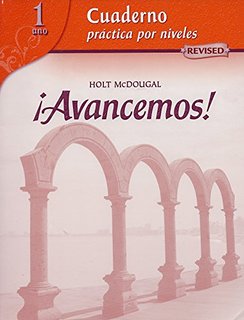
All Solutions
Page 30: Gramatica A
The objective of this exercise is to use adjectives with nouns, matching their grammatical features. In linguistics, this matching of features is called an agreement.
By now, you have seen numerous cases where linked elements in a sentence match their grammatical features. For instance, if you are to describe a feminine noun in plural, your adjective would have to follow the two features. If you would then determine this phrase with an article, it would also have to match said features. This happens because words that together make up a phrase, i.e. words that make up a semantic unit, also create a grammatical unit. This helps you understand more complex sentences, which means that if a variable word does not match a different variable word, they are not linked.
Example: Las casas de cristal verdes.
In the above example, “de cristal” and “verdes” are both adjectives. The first adjective is a nominal phrase. Its nucleus is a noun, the value of which is changed from noun to adjective by the preposition “de”. The second one is a true adjective.
Given their linear order, “de cristal” may only describe “Las casas”, whereas “verdes” might refer to both. So, how do you know whether the houses are green or the glass is green? If you take a closer look at “verdes”, you will notice that it is in plural, just like “Las casas” and unlike “[de] cristal”. This automatically implies that “verdes” is describing “Las casas”, and not “[de] cristal”.
Apply the above when choosing the appropriate adjectives for this exercise. You may refer to the below solutions for guidance.
2. buena
3. trabajador
4. ancianos
The objective of this exercise is to practice matching adjectives with nouns.
Nearly complete sentences are given for each task. You have to complete the adjective that describes the predicative. You have already seen that, in Spanish, adjectives follow nouns, unlike English, where nouns follow adjectives. Take a close look at your predicatives and complete the adjective in way that they match the predicatives.
Keep an eye on adjectives that end in “-e”. They never change by grammatical gender, however they do change by grammatical number. You may refer to the below solutions for further guidance.
2. artísticos
3. guapas
4. grandes
5. organizados
The purpose of this exercise is to practise the use of adjectives in Spanish.
Nearly complete sentences are given for each task. Complete them by describing the predicative. You can choose any adjective. Just remember that the adjective must agree with the word it describes in grammatical gender and number.
Since you may use any adjective to complete the task, use the below examples as a reference. Use different adjectives to practise your vocabulary.
1. El señor Moreno es un maestro del español muy bueno.
2. Nosotros somos los estudiantes más inteligentes del señor Unamuno.
3. Vosotros sois estudiantes buenos porque sois muy responsables.
4. La señora Márquez es una maestra muy anciana.

